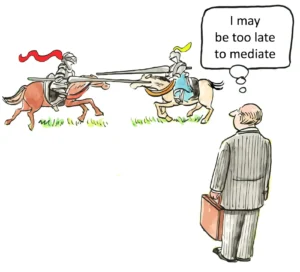How do Romeo and Juliet laws vary across different states
Romeo and Juliet laws are legal provisions that address consensual sexual relationships between young people where one or both partners are below the age of consent. These laws vary significantly across different states in the United States, reflecting diverse approaches to balancing the protection of minors with the recognition of adolescent sexuality. The variations in these laws encompass several key aspects, including the age gap allowed between partners, the minimum age for the younger party, and the legal consequences for those who fall within the law’s protection.
The fundamental purpose of Romeo and Juliet laws is to provide a degree of legal protection for young couples engaged in consensual sexual relationships, particularly when there is a small age difference between the partners. These laws aim to prevent the harsh consequences that can result from strict application of statutory rape laws, which could otherwise criminalize sexual activity between peers. However, the specific provisions and protections offered by these laws differ substantially from state to state.
One of the primary variations in Romeo and Juliet laws across states is the age difference permitted between partners. This age gap provision is a crucial element that determines whether a relationship falls under the protection of the law. For instance, in Texas, the law allows for a 3-year age difference between partners, provided the younger person is at least 14 years old. In contrast, Florida’s law is more lenient, permitting a 4-year age gap and applying to individuals between 16 and 23 years of age. Other states may have narrower or wider age gap allowances, reflecting different legislative priorities and social considerations.
The minimum age for the younger partner is another significant point of variation among state laws. While some states set this minimum age at 14, others may require the younger partner to be at least 15 or 16 years old for the Romeo and Juliet provision to apply. This variation reflects differing perspectives on the capacity of younger adolescents to consent to sexual activity, even with peers close in age. States with higher minimum ages tend to prioritize protecting younger teens from potential exploitation, while those with lower age thresholds may place more emphasis on recognizing the reality of adolescent sexual behavior.
The legal consequences for individuals who fall within the protection of Romeo and Juliet laws also vary across states. In some jurisdictions, these laws provide a complete defense to statutory rape charges, effectively decriminalizing consensual sexual activity between young people within the specified age parameters. Other states may treat the Romeo and Juliet provision as a mitigating factor that reduces the severity of the offense or the associated penalties, rather than providing full immunity from prosecution. This variation in legal consequences can have significant implications for young people involved in such relationships, affecting everything from potential criminal records to long-term life prospects.
Another area of variation is the application of Romeo and Juliet laws to different types of sexual activity. Some states may apply these provisions broadly to all forms of sexual contact, while others may distinguish between various sexual acts, providing different levels of protection or age thresholds for different activities. This nuanced approach reflects the complex considerations involved in regulating adolescent sexual behavior and the desire to provide appropriate protections while acknowledging the gradations of sexual exploration that may occur among young people.
The interaction between Romeo and Juliet laws and sex offender registration requirements is another point of significant variation across states. In some jurisdictions, individuals protected by Romeo and Juliet provisions may be exempt from sex offender registration requirements that would otherwise apply to statutory rape convictions. Other states may still require registration but provide mechanisms for removal from the registry after a certain period or upon meeting specific criteria. This variation highlights the ongoing debate about the appropriate balance between protecting minors and avoiding disproportionate consequences for young people engaged in consensual relationships.
The application of Romeo and Juliet laws to same-sex relationships is an area where state laws have shown considerable divergence. While some states have explicitly written their laws to apply equally to same-sex and opposite-sex couples, others have been less clear or have historically applied these protections unequally. This variation reflects broader societal and legal debates about LGBTQ+ rights and has been the subject of legal challenges in some jurisdictions. As of 2025, there is a growing trend towards ensuring that Romeo and Juliet laws are applied equally regardless of sexual orientation, but disparities still exist in some states.
The retroactive application of Romeo and Juliet laws is another aspect that varies across states. Some jurisdictions have enacted provisions that allow individuals previously convicted of statutory rape to petition for removal from sex offender registries if their circumstances would have fallen under the protection of subsequently enacted Romeo and Juliet laws. Other states have not provided such retroactive relief, leading to situations where individuals continue to face long-term consequences for actions that would no longer be criminalized under current law. This variation highlights the ongoing evolution of societal attitudes towards adolescent sexuality and the challenges of adapting legal frameworks to changing norms.
The intersection of Romeo and Juliet laws with other areas of criminal law, such as child pornography statutes, presents another point of variation among states. The proliferation of sexting among teenagers has created complex legal scenarios where young people protected by Romeo and Juliet laws in terms of sexual activity may still face severe consequences for creating, possessing, or sharing explicit images of themselves or their partners. Some states have enacted specific provisions to address this issue, creating separate, less severe penalties for teenage sexting that align with the principles behind Romeo and Juliet laws. Other states have not yet adapted their laws to address this technological reality, leading to potential inconsistencies in how young people are treated under different statutes.
The role of parental consent in Romeo and Juliet laws is another area of variation across states. While these laws generally focus on the age difference between partners and the capacity of young people to consent among peers, some states have incorporated provisions related to parental approval. In these jurisdictions, parental consent may affect the applicability of Romeo and Juliet protections or influence the legal consequences of a relationship. This variation reflects differing perspectives on the role of parents in adolescent sexual decision-making and the extent to which the state should defer to parental authority in these matters.
The integration of Romeo and Juliet laws with broader age of consent statutes also varies across states. In some jurisdictions, Romeo and Juliet provisions are explicitly incorporated into the main statutory framework governing sexual consent, creating a cohesive legal approach. In others, these laws exist as separate statutes or defenses, potentially leading to more complex legal interpretations and applications. This structural variation can affect how easily individuals can understand their rights and protections under the law, as well as how consistently these provisions are applied in practice.
The specificity of Romeo and Juliet laws regarding the nature of the relationship between partners is another point of variation. Some states require evidence of a pre-existing romantic relationship for the law to apply, while others focus solely on the age difference and the consensual nature of the sexual activity. This variation reflects different approaches to distinguishing between peer relationships and potentially exploitative situations, as well as varying levels of legislative willingness to delve into the personal details of adolescent relationships.
The interaction between Romeo and Juliet laws and statutory rape provisions involving individuals in positions of authority or trust presents another area of state-by-state variation. While Romeo and Juliet laws generally aim to protect peer relationships, many states maintain stricter standards for situations involving teachers, coaches, or other authority figures, regardless of the age difference. The specific handling of these cases and the extent to which Romeo and Juliet protections may or may not apply can differ significantly across jurisdictions.
The evidentiary requirements for invoking Romeo and Juliet protections also vary among states. Some jurisdictions place the burden of proof on the defendant to demonstrate that the relationship falls within the protected parameters, while others may require prosecutors to prove that the relationship does not qualify for protection. This procedural variation can have significant implications for how these cases are handled in the legal system and the level of protection actually afforded to young people in practice.
The application of Romeo and Juliet laws to non-penetrative sexual acts is another point of divergence among state laws. While some states apply these provisions broadly to all forms of sexual contact, others may have different standards or age thresholds for activities such as oral sex or sexual touching. This nuanced approach reflects the complex task of legislating adolescent sexual behavior and the recognition that different acts may carry different risks or implications for young people’s development and well-being.
The interaction between Romeo and Juliet laws and statutory rape provisions involving pregnancy or sexually transmitted infections (STIs) is another area where state approaches can differ. Some jurisdictions may have specific provisions addressing situations where a pregnancy results from a relationship that would otherwise be protected under Romeo and Juliet laws. Others may consider the transmission of STIs as a factor that could negate Romeo and Juliet protections, reflecting concerns about the potential long-term consequences of sexual activity among young people.
The role of judicial discretion in applying Romeo and Juliet laws varies across states. Some jurisdictions provide judges with significant latitude to consider the specific circumstances of each case when determining whether Romeo and Juliet protections should apply. Others have more rigid statutory frameworks that leave less room for judicial interpretation. This variation can lead to differences in how consistently these laws are applied and the extent to which individual circumstances are taken into account in legal proceedings.
The intersection of Romeo and Juliet laws with child abuse reporting requirements is another area of potential variation among states. Mandatory reporters, such as teachers or healthcare providers, may face complex legal and ethical considerations when encountering sexual relationships between young people that may fall under Romeo and Juliet protections. The specific guidance provided to mandatory reporters regarding these situations can vary, potentially leading to differences in how such cases are identified and handled across jurisdictions.
The application of Romeo and Juliet laws in cases involving individuals with disabilities is an area where state approaches may differ. Some jurisdictions have specific provisions addressing the capacity to consent for individuals with cognitive or developmental disabilities, which may interact with Romeo and Juliet laws in complex ways. The balance between protecting vulnerable individuals and recognizing their sexual autonomy can lead to variations in how these cases are handled across different states.
The interaction between Romeo and Juliet laws and statutory rape provisions involving the use of alcohol or drugs presents another point of variation. While intoxication generally negates the ability to consent to sexual activity, some states may have specific provisions addressing situations where both parties are voluntarily intoxicated and close in age. The handling of these cases can vary significantly, reflecting different approaches to balancing youth protection with the realities of adolescent risk-taking behaviors.
The application of Romeo and Juliet laws in cases involving online or long-distance relationships is an emerging area of variation among states. As technology facilitates relationships between young people who may be geographically distant, questions arise about how to apply age of consent and Romeo and Juliet provisions when partners are in different jurisdictions. Some states have begun to address this issue explicitly in their statutes, while others rely on existing legal frameworks, potentially leading to inconsistent outcomes across state lines.
The interaction between Romeo and Juliet laws and human trafficking statutes is another area where state approaches may diverge. While Romeo and Juliet laws are designed to protect consensual peer relationships, there is a recognition that age-gap relationships can sometimes involve exploitation or coercion. The specific provisions addressing how these laws interact, and the thresholds for when a relationship moves from being protected under Romeo and Juliet laws to being considered potential trafficking, can vary across jurisdictions.
The role of educational programs in conjunction with Romeo and Juliet laws is another point of variation among states. Some jurisdictions have implemented mandatory education programs on consent, healthy relationships, and the legal implications of teenage sexual activity as part of their approach to addressing these issues. The specific content, implementation, and legal status of these programs can vary significantly, reflecting different perspectives on the role of education in preventing legal issues related to adolescent sexuality.
The application of Romeo and Juliet laws in tribal jurisdictions within states presents another layer of complexity and variation. Tribal courts may have their own laws and customs regarding age of consent and teenage relationships, which may or may not align with state Romeo and Juliet provisions. The interaction between tribal, state, and federal law in these cases can lead to significant variations in how similar situations are handled across different jurisdictions within a single state.
The interaction between Romeo and Juliet laws and immigration law is an emerging area of variation among states. For non-citizen youth, involvement in a sexual relationship, even if protected under Romeo and Juliet laws, could potentially have immigration consequences. The extent to which state Romeo and Juliet protections are recognized or considered in immigration proceedings can vary, potentially leading to disparate outcomes for immigrant youth across different jurisdictions.
The application of Romeo and Juliet laws in cases involving multiple partners or group sexual activity among young people is another area where state approaches may differ. While these laws are typically designed with dyadic relationships in mind, the reality of adolescent sexual exploration may involve more complex scenarios. The handling of these cases and the extent to which Romeo and Juliet protections may apply can vary significantly across jurisdictions.
The interaction between Romeo and Juliet laws and civil liability is another point of potential variation among states. While these laws primarily address criminal liability, questions may arise about their implications for civil lawsuits related to teenage sexual activity. Some states may have provisions explicitly addressing the impact of Romeo and Juliet laws on civil claims, while others may leave this issue to judicial interpretation, potentially leading to inconsistent outcomes across jurisdictions.
In conclusion, the variation in Romeo and Juliet laws across different states reflects the complex and often contentious nature of regulating adolescent sexuality. These laws attempt to balance the protection of minors with the recognition of the realities of teenage relationships, resulting in a diverse legal landscape across the United States. As societal attitudes and understanding of adolescent development continue to evolve, it is likely that these laws will continue to be subject to scrutiny, debate, and potential revision in many jurisdictions. The challenge for lawmakers, legal professionals, and society at large is to craft and implement laws that effectively protect young people from exploitation while avoiding the criminalization of consensual peer relationships.
Website citations:
- https://www.guttmacher.org/state-policy/explore/sex-and-hiv-education
- https://www.aclu.org/other/laws-restricting-teenagers-access-abortion
- https://www.cdc.gov/healthyyouth/data/yrbs/index.htm
- https://www.rainn.org/articles/legal-role-consent
- https://www.americanbar.org/groups/public_education/publications/insights-on-law-and-society/volume-18/insights-vol–18—issue-1/the-age-of-consent/
- https://www.childwelfare.gov/pubpdfs/manda.pdf
- https://www.justice.gov/criminal-ceos/citizens-guide-us-federal-law-child-sexual-abuse


















